#film winder
Explore tagged Tumblr posts
Text
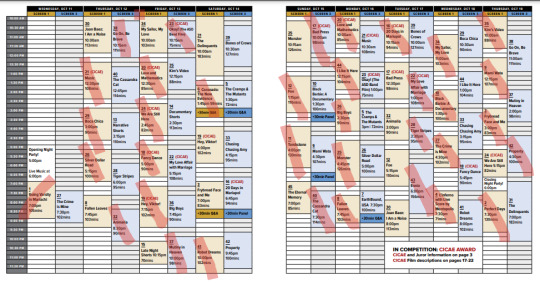
I think I have my film festival planned!
#talks#hype#36 films in 8 days woo!!#i cant do more on that sat cause im doing a taiko preformance#also the last day is my b day and im starting with kims video and ending with the new wim winders its gonna be good :)#so much good stuff im excited#like the new koreeda pic and the enio doc and and the cannes winner fallen leaves aaaaaa#and some of the ones i didnt know of before sound really interesting aaaa#i may move things around but i think i have it to where its maxed
3 notes
·
View notes
Text
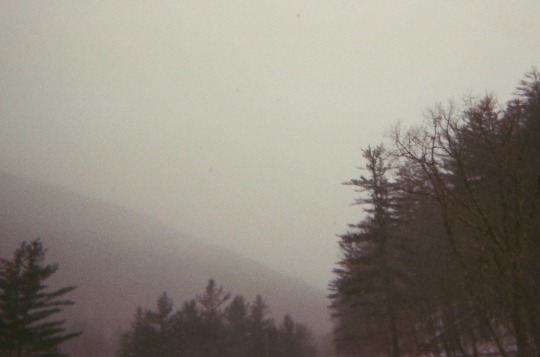
Ski Trip. Phoenicia, NY 2021
#moody#winder#trees#snow#digital camera#disposable camera#expired film#gray#meloncholy#photo#photography#feel#texture#grain#somber#melancholy#ski#sky#mountains
2 notes
·
View notes
Text
Sebastian Stan Tells All: Becoming Donald Trump, Gaining 15 Pounds and Starring in 2024’s Most Controversial Movie
By Daniel D'Addario
Sebastian Stan Variety Cover Story

It started with the most famous voice on the planet, the one that just won’t shut up.
Sebastian Stan, in real life, sounds very little like Donald Trump, whom he’s playing in the new film “The Apprentice.” Sure, they share a tristate accent — Stan has lived in the city for years and attended Rutgers University before launching his career — but he speaks with none of Trump’s emphasis on his own greatness. Trump dwells, Stan skitters. Trump attempts to draw topics together over lengthy stem-winders (what he recently called “the weave”), while Stan has a certain unwillingness to be pinned down, a desire to keep moving. It takes some coaxing to bring Stan, a man with the upright bearing and square jaw of a matinee idol, to speak about his own process — how hard he worked to conjure a sense Trump, and how he sought to bring out new insights about America’s most scrutinized politician.
“I think he’s a lot smarter than people want to say about him,” Stan says, “because he repeats things consistently, and he’s given you a brand.” Stan would know: He watched videos of Trump on a loop while preparing for “The Apprentice.” In the film, out on Oct. 11, Stan plays Trump as he moves from insecure, aspiring real estate developer to still insecure but established member of the New York celebrity firmament.
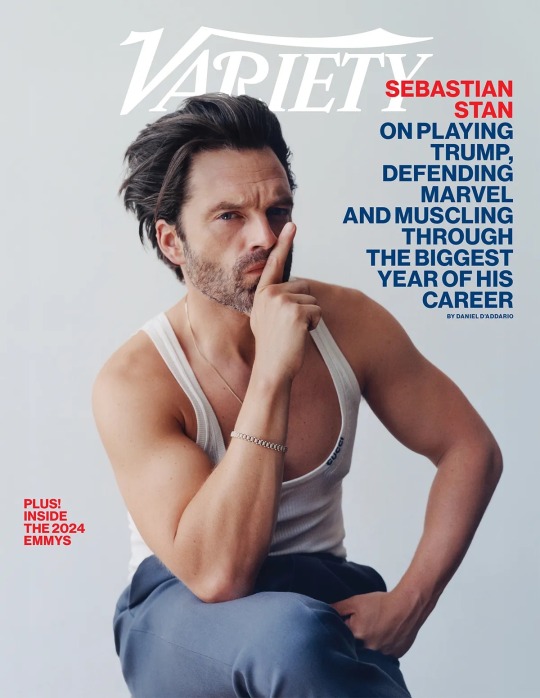
We’re sitting over coffee in Manhattan. Stan is dressed down in a black chore coat and black tee, yet he’s anything but a casual conversation partner. He rarely breaks eye contact, doing so only on the occasions when he has something he wants to show me on his iPhone (cracked screen, no case). In this instance, it’s folders of photos and videos labeled “DT” and “DT PHYSICALITY.”
“I had 130 videos on his physicality on my phone,” Stan says. “And 562 videos that I had pulled with pictures from different time periods — from the ’70s all the way to today — so I could pull out his speech patterns and try to improvise like him.” Stan, deep in character, would ad-lib entire scenes at director Ali Abbasi’s urging, drawing on the details he’d learned from watching Trump and reading interviews to understand precisely how to react in each moment.
“Ali could come in on the second take and say, ‘Why don’t you talk a little bit about the taxes and how you don’t want to pay?’ So I had to know what charities they were going to in 1983. Every night I would go home and try not only to prepare for the day that was coming, but also to prepare for where Ali was going to take this.”
Looking at Stan’s phone, among the endless pictures of Trump, I glimpse thumbnails of Stan’s own face perched in a Trumpian pout and videos of the actor’s preparation just aching to be clicked — or to be stored in the Trump Presidential Library when this is all over in a few months, or in 2029, or beyond.
“I started to realize that I needed to start speaking with my lips in a different way,” Stan says. “A lot of that came from the consonants. If I’m talking, I’m moving forward.” On film, Stan shapes his mouth like he can’t wait to get the plosives out, puckering without quite tipping into parody. “The consonants naturally forced your lips forward.”
“If he did 10% more of what he did, it would become ‘Saturday Night Live,’” Abbasi says. “If he did 10% less, then he’s not conjuring that person. But here’s the thing about Sebastian: He’s very inspired by reality, by research. And that’s also the way I work; if you want to go to strange places, you need to get your baseline reality covered very well.”
A little later, Stan passes me the phone again to show me a selfie of him posing shirtless and revealing two sagging pecs and a bit of a gut. He’s pouting into a mirror. If his expression looks exaggerated, consider that he was in Marvel-movie shape before stepping into the role of the former president; the body transformation happened rapidly and jarringly. Trump’s size is a part of the film’s plot — as Trump’s sense of self inflates, so does he. In a rush to meet the shooting deadline for “The Apprentice,” Abbasi asked Stan, “How much weight can you gain?”
“You’d be surprised,” Stan tells me. “You can gain a lot of weight in two months.” (Fifteen pounds, to be exact.)
Now he’s back in fighting form, but the character has stayed with him. After years of playing second-fiddle agents of chaos — goofball husbands to Margot Robbie’s and Lily James’ characters in “I, Tonya” and Hulu’s “Pam & Tommy,” surly frenemy to Chris Evans’ Captain America in the Marvel franchise — Stan plunged into the id of the man whose appetites have reshaped our world. He had to have a polished enough sense of Trump that he could improvise in character, and enough respect for him to play him as a human being, not a monster.
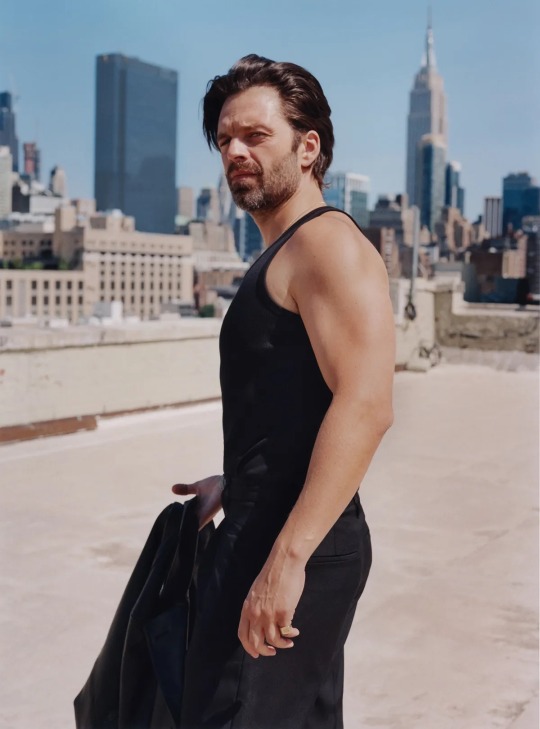
It’s one of two transformations this year for Stan — and one that might give a talented actor that most elusive thing: a brand of his own. He’s long been adjacent enough to star power that he could feel its glow, but he hasn’t been the marquee performer. While his co-stars have found themselves defined by the projects he’s been in — from “Captain America” and “I, Tonya” back to his start on “Gossip Girl” — he’s spent more than a decade in the public eye while evading being defined at all.
This fall promises to be the season that changes all that: Stan is pulling double duty with “The Apprentice” and “A Different Man” (in theaters Sept. 20), in which he plays a man afflicted with a disfiguring tumor disorder who — even when presented with a fantastical treatment that makes him look like, well, Sebastian Stan — can’t be cured of ailments of the soul. For “A Different Man,” Stan won the top acting prize at the Berlin Film Festival; for “The Apprentice,” the sky’s the limit, if it can manage to get seen. (More on that later.)
One reason Stan has largely evaded being defined is that he’s never the same twice, often willing to get loopy or go dark in pursuit of his characters’ truths. That’s all the more true this year: In “The Apprentice,” he’s under the carapace of Trumpiness; in “A Different Man,” his face is hidden behind extensive prosthetics.
“In my book, if you’re the good-looking, sensitive guy 20 movies in a row, that’s not a star for me,” says Abbasi, who compares Stan to Marlon Brando — an actor eager to play against his looks. “You’re just one of the many in the factory of the Ken dolls.”
This fall represents Stan’s chance to break out of the toy store once and for all. His Winter Soldier brought a jolt of evil into Captain America’s world, and his Jeff Gillooly was the devil sitting on Tonya Harding’s shoulder. Now Stan is at the center of the frame, playing one of the most divisive characters imaginable. So he’s showing us where he can go. The spotlight is his, and so is the risk that comes with it.
Why take such a risk?
The script for “The Apprentice,” which Stan first received in 2019, but which took years to come together, made him consider the American dream, the one that Trump achieved and is redefining.
Stan emigrated with his mother, a pianist, from communist Romania as a child. “I was raised always aware of the American dream: America being the land of opportunity, where dreams come true, where you can make something of yourself.” He pushes the wings of his hair back to frame his face, a gold signet ring glinting in the late-summer sunlight, and, briefly, I can hear a hint of Trump’s directness of approach. “You can become whoever you want, if you just have a good idea.” Stan’s good idea has been to play the lead in movies while dodging the formulaic identity of a leading man, and this year will prove just how far he can take it.
“The Apprentice” seemed like it would never come together before suddenly it did. This time last year, Stan was sure it was dead in the water, and he was OK with that. “If this movie is not happening, it’s because it’s not meant to happen,” he recalls thinking. “It will not be because I’m too scared and walk away.”
Called in on short notice and filming from November 2023 to January of this year (ahead of a May premiere in Cannes), Stan lent heft and attitude to a character arc that takes Trump from local real estate developer in the 1970s to national celebrity in the 1980s. He learns the rough-and-tumble game of power from the ruthless and hedonistic political fixer Roy Cohn (Jeremy Strong), eventually cutting the closeted Cohn loose as he dies of AIDS and alienating his wife Ivana (Maria Bakalova) in the process. (In a shocking scene, Donald sexually assaults Ivana in their Trump Tower apartment.) For all its edginess, the film is about Trump’s personality — and the way it calcified into a persona — rather than his present-day politics. (Despite its title, it’s set well before the 2004 launch of the reality show that finally made Trump the superstar he longed to be.)
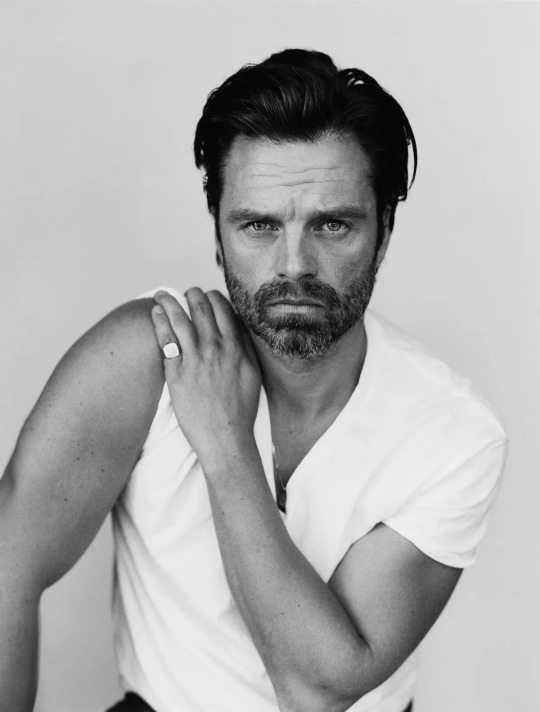
And despite the fact that Trump has kept America rapt since he announced his run for president in 2015, Hollywood has been terrified of “The Apprentice.” The film didn’t sell for months after Cannes, an unusual result for a major English-language competition film, partly because Trump’s legal team sent a cease-and-desist letter attempting to block the film’s release in the U.S. while the fest was still ongoing. When it finally sold, it was to Briarcliff Entertainment, a distributor so small that the production has launched a Kickstarter campaign to raise money so that it will be able to stay in theaters.
Yes, Hollywood may vote blue, but it’s not the same town that released “Fahrenheit 9/11” or even “W.,” let alone a film that depicts the once (and possibly future) president raping his wife. (The filmmakers stand behind that story. “The script is 100% backed by my own interviews and historical research,” says Gabriel Sherman, the screenwriter and a journalist who covers Trump and the American conservative movement. “And it’s important to note that it is not a documentary. It’s a work of fiction that’s inspired by history.”) Entertainment corporations from Netflix to Disney would be severely inconvenienced if the next president came into office with a grudge against them.
“I am quite shocked, to be honest,” Abbasi says. “This is not a political piece. It’s not a hit piece; it’s not a hatchet job; it’s not propaganda. The fact that it’s been so challenging is shocking.” Abbasi, born in Iran, was condemned by his government over his last film, “Holy Spider,” and cannot safely return. He sees a parallel in the response to “The Apprentice.” “OK, that’s Iran — that is unfortunately expected. But I wasn’t expecting this.”
“Everything with this film has been one day at a time,” Stan says. The actor chalks up the film’s divisiveness to a siloed online environment. “There are a lot of people who love reading the [film’s] Wikipedia page and throwing out their opinions,” he says, an edge entering his voice. “But they don’t actually know what they’re talking about. That’s a popular sport now online, apparently.”
Unprompted, Stan brings up the idea that Trump is so widely known that some might think a biographical film about him serves no purpose. “When someone says, ‘Why do we need this movie? We know all this,’ I’ll say, ‘Maybe you do, but you haven’t experienced it. The experience of those two hours is visceral. It’s something you can hopefully feel — if you still have feelings.’”
After graduating from Rutgers in 2005, Stan found his first substantial role on “Gossip Girl,” playing troubled rich kid Carter Baizen. Like teen soaps since time immemorial, “Gossip Girl” was a star-making machine. “It was the first time I was in serious love with somebody,” he says. (He dated the series’ star, Leighton Meester, from 2008 to 2010.) He feels nostalgic for that moment: “Walking around the city, seeing these same buildings and streets — life seemed simpler.”
Stan followed his “Gossip Girl” gig with roles on the 2009 NBC drama “Kings,” playing a devious gay prince in an alternate-reality modern world governed by a monarchy, and the 2012 USA miniseries “Political Animals,” playing a black-sheep prince (and once again a gay man) of a different sort — the son of a philandering former president and an ambitious former first lady.
When I ask him what lane he envisioned himself in as a young actor, he shrugs off the question. “I grew up with a single mom, and I didn’t have a lot of male role models. I was always trying to figure out what I wanted to be. And at some point, I was like, I could just be a bunch of things.”

Which might seem challenging when one is booked to play the same character, Bucky Barnes, in Marvel movie after Marvel movie. Bucky’s adventures have been wide-ranging — he’s been brainwashed and turned evil and then brought back to the home team again, all since his debut in 2011’s “Captain America: The First Avenger.” Next year, he’ll anchor the summer movie “Thunderbolts,” as the leader of a squad of quirky heroes played by, among others, Julia Louis-Dreyfus and Florence Pugh. It’s easy to wonder if this has come to feel like a cage of sorts.
Not so, says Stan. His new Marvel film “was kind of like ‘One Flew Over the Cuckoo’s Nest’ — a guy coming into this group that was chaotic and degenerate, and somehow finding a way to unite them.”
Lately, knives have been out for Marvel movies as some have disappointed at the box office, and “Thunderbolts,” which endured strike delays and last-minute cast changes, has been under scrutiny.
“It’s become really convenient to pick on [Marvel films],” Stan says. “And that’s fine. Everyone’s got an opinion. But they’re a big part of what contributes to this business and allows us to have smaller movies as well. This is an artery traveling through the system of this entire machinery that’s Hollywood. It feeds in so many more ways than people acknowledge.” He adds, “Sometimes I get protective of it because the intention is really fucking good. It’s just fucking hard to make a good movie over and over again.”
Which may account for an eagerness to try something new. “In the last couple of years,” he says, “I’ve gotten much more aggressive about pursuing things that I want, and I’m constantly looking for different ways of challenging myself.”
The challenge continued throughout the shoot of “The Apprentice,” as Stan pushed the material. “One of the most creatively rewarding parts of the process was how open Sebastian was to giving notes on the script but also wanting to go beyond the script,” says Sherman, the screenwriter. “If he was interested in a certain aspect of a scene, he was like, Can you find me a quote?” he recalls.
Building a dynamic through improvised scenes, Stan and Strong stayed in character throughout the “Apprentice” shoot. “I was doing an Ibsen play on Broadway,” says Strong, who won a Tony in June for his performance in “An Enemy of the People,” “and he came backstage afterwards. And it was like — I’d never really met Sebastian, and I don’t think he’d ever met me. So it was nice to meet him.”
Before the pair began acting together, they didn’t rehearse much — “I’m not a fan of rehearsals,” Strong says. “I think actors are best left in their cocoon, doing their work, and then trusted to walk on set and be ready.” The two didn’t touch the script together until cameras went up — though they spent a preproduction day, Strong says, playing games in character as Donald and Roy.
After filming, both have kept memories of the hold their characters had on them. They shared a flight back from Telluride — a famously bumpy trip out of the mountains. “He’s a nervous flyer, and I’m a nervous flyer,” Stan says. Both marveled at the fact that they’d contained their nerves on the first day of shooting “The Apprentice,” when their characters traveled together via helicopter. “We both go, ‘Yeah — but there was a camera.’”
Stan’s aggressive approach to research came in handy on “A Different Man,” which shot before “The Apprentice.” His character’s disorder, neurofibromatosis, is caused by a genetic mutation and presents as benign tumors growing in the nervous system. After being healed, he feels a growing envy for a fellow sufferer who seems unbothered by his disability.
Stan’s co-star, Adam Pearson, was diagnosed with neurofibromatosis in early childhood. Stan found the experience challenging to render faithfully. “I said many times, I can do all the research in the world, but am I ever going to come close to this?” Stan says. “How am I going to ever do this justice?”
Plus, he had precious little time to prepare: “He was fully on board, and the film was being made weeks later,” director Aaron Schimberg says. “Zero to 60 in a matter of weeks.”
The actor grappled for something to hold on to, and Pearson sug gested he refer to his own experience of fame. “Adam said to me, ‘You know what it’s like to be public property,’” Stan says.
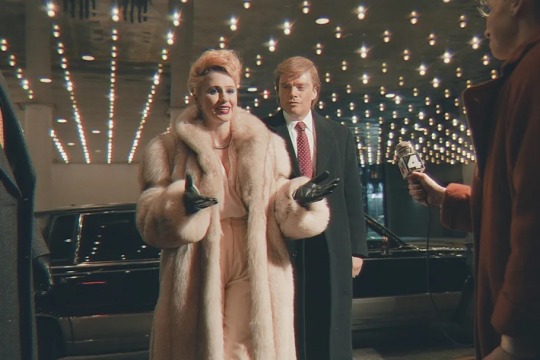
Pearson recalls describing the experience to Stan this way: “While you don’t understand the invasiveness and the staring and the pointing that I’ve grown up with, you do know what it’s like to have the world think you owe them something.”
That sense of alienation becomes universal through the film’s storytelling: “A Different Man” takes its premise as the jumping-off point for a deep and often mordant investigation of who we all are underneath the skin.
The film was shot in 22 days in a New York City heat wave, and there was, Schimberg says, “no room for error. I would get four or five takes, however many I could squeeze out, but there’s no coverage.”
Through it all, Stan’s performance is utterly poised — Schimberg and Stan discussed Buster Keaton as a reference for his ability to be “completely stone-faced” amid chaos, the director says. And the days were particularly long because Oscar-nominated prosthetics artist Michael Marino was only able to apply Stan’s makeup in the early morning, before going to his job on the set of “The Marvelous Mrs. Maisel.”
“Even though I wasn’t shooting until 11 a.m., I would go at like 5 in the morning to his studio, or his apartment,” Stan recalls. The hidden advantage was that Stan had hours to kill while made up like his character, the kind of person the world looks past. “I wanted to walk around the city and see what happened,” Stan says. “On Broadway, one of the busiest streets in New York, no one’s looking at me. It’s as if I’m not even there.” The other reaction was worse: “Somebody would immediately stop and very blatantly hit their friend, point, take a picture.”
It was a study in empathy that flowed into the character. Stan had spoken to Pearson’s mother, who watched her son develop neurofibromatosis before growing into a disability advocate and, eventually, an actor. “She said to me, ‘All I ever wanted was for someone to walk in his shoes for a day,’” Stan recalls. “And I guess that was the closest I had ever come.”
“The Apprentice” forced Stan, and forces the viewer, to do the same with a figure that some 50% of the electorate would sooner forget entirely. And that lends the film its controversy. Those on the right, presupposing that the movie is an anti-Trump document, have railed against it. In a statement provided to Variety, a Trump campaign spokesman said, “This ‘film’ is pure malicious defamation, should never see the light of day and doesn’t even deserve a place in the straight-to-DVD section of a bargain bin at a soon-to-be-closed discount movie store, it belongs in a dumpster fire.” The campaign threatened a lawsuit, though none has materialized.
Asked about the assault scene, Stan notes that Ivana had made the claim in a deposition, but later walked it back. “Is it closer to the truth, what she had said directly in the deposition or something that she retracted?” he asks. “They went with the first part.”
The movie depicts, too, Ivana’s carrying on with her marriage after the violation, which may be still more devastating. “How do you overcome something like this?” asks Bakalova. “Do you have to put on a mask that everything is fine? In the next scene, she’s going to play the game and pretend that we’re the glamorous, perfect couple.” The Trumps, in “The Apprentice,” live in a world of paper-thin images, one that grows so encompassing that Donald no longer feels anything for the people to whom he was once loyal. They’re props in his stage show.
“The Apprentice” will drop in the midst of the most chaotic presidential election of our lifetime. “The way it lands in this extremely polarized situation, for me as an artist, is exciting. I won’t lie to you,” says Abbasi.
When asked if he was concerned about blowback from a Trump 47 presidency, Stan says, “You can’t do this movie and not be thinking about all those things, but I really have no idea. I’m still in shock from going from an assassination attempt to the next weekend having a president step down [from a reelection bid].”
Stan’s job, as he sees it, was to synthesize everything he’d absorbed — all those videos on his phone — into a person who made sense. This Trump had to be part of a coherent story, not just the flurry of news updates to which we’ve become accustomed.
“You can take a Bach or a Beethoven, and everyone’s going to play that differently on the piano, right?” Stan says. (His pianist mother named him for Johann Sebastian Bach.) “So this is my take on what I’ve learned. I have to strip myself of expectations of being applauded for this, if people are going to like it or people are going to hate it. People are going to say whatever they want. Hopefully they should think at least before they say it.”
It’s a reality that Stan is now used to — the work is the work, and the way people interpret him is none of his business. Perhaps that’s why he has run away from ever being the same thing twice. “I could sit with you today and tell you passionately what my truth is, but it doesn’t matter,” he says. “Because people are more interested in a version of you that they want to see, rather than who you are.”
“The Apprentice” has been the subject of extreme difference of opinion by many who have yet to see it. It’s been read — and will continue to be after its release — as anti-Trump agitprop. The truth is chewier and more complicated, and, perhaps, unsuited for these times.
“Are we going to live in a world where anyone knows what the truth is anymore? Or is it just a world that everyone wants to create for themselves?” Stan asks.
His voice — the one that shares a slight accent with Trump but that is, finally, Stan’s own — is calm and clear. “People create their own truth right now,” he says. “That’s the only thing that I’ve made peace with; I don’t need to twist your arm if that’s what you want to believe. But the way to deal with something is to actually confront it.”
#Variety#Sebastian Stan#Photoshoot#A Different Man#The Apprentice#Thunderbolts*#Marvel#Interview#mrs-stans
263 notes
·
View notes
Text
in the forest straight up cranking it, and by "it" lets justr say... the film advance winder on my yashica mat-124g film camera
218 notes
·
View notes
Text

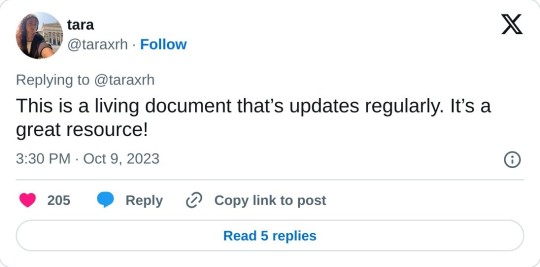


A copy of the reading list, if you dislike clicking on Google docs links:

The Popular University of the Palestinian Youth Movement Presents Our History of Popular Resistance: Palestine Reading List
As Palestinians, we are bearers of a rich and beautiful history. Our history is not defined by Zionism, but by our people’s steadfast popular resistance to Zionist colonization and imperialism. For over 75 years, our people have faced Zionist ethnic cleansing and for over 75 years we have risen in struggle against it. Even prior to the 1948 Nakba, Palestinians consistently rose up against British imperialism and the Zionist movement, as exemplified in the 1936-9 Arab Revolt. Our history and struggle, therefore, cannot be defined by victimhood. Instead, they are defined by a relentless persistence toward liberation, even under the most brutal colonial conditions.
Today is no exception. In a moment when the word is rising up for Palestinian freedom, we must emphasize that popular uprisings across Palestine are deeply and firmly rooted in our history. For this reason, our recommended reading list offers historical context on Palestine through the prism of popular resistance, which continues to be our main resource in the fight for land, return, and liberation. We include sources in English and Arabic on popular resistance ranging from political histories, interviews, memoirs, poetry, films, and primary documents. By popular resistance we refer to all forms of resistance taken up by Palestinians: in the form of economic resistance, women’s organizations, unions and labor organizing, and military/armed resistance.
As the Popular University, a committee of the Palestinian Youth Movement, we believe that education must be wielded in service of struggle. Our viewpoint finds inspiration and guidance from the Popular University in Palestine, of which the martyred Basel al-Araj was a part. In our meeting with an educator in this project, Khaled Odeitallah, he emphasized how the political role of pedagogical strategies inspired the objective and vision of the Popular University. He asked: “What is the political role that knowledge production must play?” From this perspective we seek to motivate, engage and facilitate a robust engagement on the history and present of our struggle. Study and struggle are intimately tied to one another. We do not learn and produce knowledge on Palestinian history for academic or careerist pursuits; we produce knowledge in service of our political struggle for Palestinian liberation.
We encourage you to use this reading list to educate yourself on the history of Palestine beyond the objective facts of colonial domination. This is a political responsibility for anyone concerned with Palestine’s liberation. Through engagement with our history of resistance, we may join the struggle armed with knowledge and a continued commitment not to our suffering, but to our collective strength.
Note: We included a number of texts in Arabic that offer analysis and context for this battle that is rarely offered in the English media outlets. Even if you do not read Arabic, we recommend copy pasting the texts in Arabic into Google Translate or another translation service. The translation, while imperfect, will provide you with an overall sense of the arguments and main points being made.
Introductory and Archival Materials
Decolonize Palestine
(مكتبة سبيل (الصفحة العربية
Sabil Library (English Site)
Learn the Revolution
باب الواد - الجامعة الشعبية
Revolution and Rebellion under the British Occupation:
The Revolution of 1936-1939 in Palestine: Background, Details, and Analysis, Ghassan Kanafani
(ثورة 1936- 1939: خلفيات وتفاصيل وتحليل.“ غسان كنفاني (1972”
Memories of Revolt: The 1936-1939 Rebellion and the Palestinian National Past, Ted Swedenburg (1995)
أبو جلدة والعرم��ط Abu Jilda & Al ‘Armit
“Abu Jilda, Anti-Imperial Hero: Banditry and Popular Rebellion in Palestine,” Alex Winder (2015)
“A century of Palestinian resistance: the legacy of Izz ad-Din al-Qassam,” The East is a Podcast (2021)
Palestine: A Modern History, Abdul-Wahhab Kayyali (1978)
Palestinian Resistance 1948 - 1993
Palestinian history doesn’t start with the Nakba by PYM (May, 2023)
Armed Struggle and the Search for a State: The Palestinian National Movement, 1948 - 1993, Yezid Sayigh (1997)
(معنى النكبة“ قنسطنطين زريق (1948”
Palestinians: From Peasants to Revolutionaries, Rosemary Sayegh (1979)
(2006) “من التحرير إلى الدولة: تاريخ الحركة الوطنية الفلسطينية، 1948-1988” هيلغا بوبغارتن
Green March Black September: The Story of the Palestinian Arabs, John Cooley (1973)
“Interview with Fr. Shehadeh Shehadeh on the First Land Day Protest,” Sharif Hamadeh (2005)
Gender in Crisis: Women and the Palestinian Resistance Movement, Julie Peteet (1991)
“What the Uprising Means,” Salim Tamari (1988)
“The Stone and the Pen: Palestinian Education During the 1987 Intifada,” Yamila Hussein (2005)
Popular Resistance in Palestine: A History of Hope and Empowerment, Mazin Qumsiyeh (2011)
(وقع الانتفاضات الشعبية الديمقراطية - تاريخ ال��نظمة و الحر كات“ جميل هلال (2011”
“Fighting on Two Fronts: Conversations with Palestinian Women” Soraya Antonius (1979)
“100 Years of Palestinian Popular Resistance” by Nasreen Abd Elal (May, 2023)
Contemporary Palestinian Resistance
Zionism in crisis: Palestinian resistance forges a new horizon (April, 2023)
“The Palestinians’ inalienable right to resist,” Louis Allday (2021)
“No Choice but to Break Free: An Interview with Ahmed Abu Artema,” Ahmed Abu Artema and Lara Sheehi (2019)
Interview with Ahmad Saadat, Leading from Prison, Ending Negotiations, and Rebuilding the Resistance (2013)
“Palestinian Resistance and Sheikh Jarrah,” Devyn Springer, Mohammed el-Kurd, and Abu Shuwarib, Groundings Podcast (2021)
Notes from the Great March of Return w/ Tareq Loubani, The East is a Podcast (2022)
(هبّة باب العامود: نصر جديد وتحدٍّ جديد 2“ خالد عودة الله (2021”
(حراك «طالعات» الفلسطيني: لا وجود لوطن حرّ إلّا بنساء حرّة“ حلا مرشود (2019”
Operation Sword Edge [2018] - Sayaret Matkal’s Covert Operation, Silah Report (2021)
Battle of Shujaiya - The 51 Day War: Ruin and Resistance in Gaza
The Evolution of the Palestinian Resistance and Its New Strategy (October, 2022)
On the Joint Operations Room
Palestinian Institutions and Political Parties
PLO: History of a Revolution - Six-part documentary series about history of the Palestinian Liberation Organization (2009)
The PLO: The Struggle Within, Alain Gresh (1985)
“The Joy of Flying 1967-73” in The Palestinian Liberation Organization: People, Power, and Politics, Helena Cobban (1984)
“The Palestinian National Covenant,” published in Basic Political Documents of the Armed Palestinian Resistance Movement, Leila Kadi (ed.) (1969)
“PLO Institutions: The Challenge Ahead,” Jamil Hilal (1993)
“A New Hamas Through Its New Documents,” Khaled Hroub (2006)
Worker Mobilization, Labor Movements, and Economic Resistance
“When pickles become a weapon: Economy of the first Intifada,” Palestinian Journeys
(أداء المؤسسات الاقتصادية في المناطق المحتلة قبل الانتفاضة وخلالها“ عادل سمارة (1990”
“Developing a Palestinian Resistance Economy through Agricultural Labor,” Rayya El-Zein (2017)
Resistance in Zionist Prisons
(2021) كلام الأسرى.. عيون الكلام
Video: Steadfastness and Resistance — the Palestinian prisoner’s movement and the case of Ahmad Sa’adat
“One Man as a Whole Generation: The Unfinished War of Zakaria Zubeidi,” Ramzy Baroud (2021)
“Liberating a Palestinian Novel from Israeli Prison,” Danya Al-Saleh and Samar Al-Saleh (2023)
“The Prisoner Walid Daqqah: a stubborn conscience that cannot be seared,” Wisam Rafeedie (2023)
“Freedom or Martyrdom: Walid Daqqah’s fate is in our hands,” PYM (2023)
“Resistance and Revolutionary Will: Soha Bechara and Nawal Baidoun’s Testimonies of Khiam Prison,” Mary Turfah (2023)
Role of Palestinian Women in the Resistance
Interview with Samira Salah (2013)
Behind the intifada: Labor and Women’s Movements in the Occupied Territories, Joost R. Hiltermann (1991)
Palestinian Women and the Intifada, Rana Khoury (1995)
“The Palestinian women’s autonomous movement: Emergency, dynamics and challenges,” Rabab Abdulhadi (1998)
“Women of the Intifada: gender, class and national liberation,” Nahla Abdo (1991)
Women, War, and Peace: Reflections from the Intifada, Nahla Abdo (2002)
Palestinian Women’s Activism, Islah Jad (2018)
Memoirs and Personal Profiles
“Committed to Liberation: Remembering Soha Bechara’s Clandestine Mission” (includes chapter 7 of Resistance: My Life for Lebanon by Soha Bechara)
My People Shall Live, Leila Khaled (1971)
Liberation, Wonder, and the “Magic of the World”: Basel al-Araj’s I Have Found My Answers, Hazem Jamjoum (2021)
(وجدت أجوبتي: هكذا تكلم الشهيد باسل الأعرج“ باسل الأعرج (2018”
(مذكرات نجاتي صدقي“ ،تقديم وإعداد حنّا أبو حنّا، (2001”
“I Went to Defend Jerusalem in Cordoba: Memoirs of a Palestinian Communist in the Spanish International Brigades,” Najati Sidqqi (2015)
“Two Portraits in Resistance - Abu ‘Umar and Mahjub ‘Umar,” Jehan Helou and Elias Khoury (2012)
My Life in the PLO: The Inside Story of the Palestinian Struggle, Shafiq al-Hout and Jean Said Makdisi (2019)
Lightning through the Clouds: ‘Izz al-Din al-Qassam and the Making of the Modern Middle East, Mark Sanagan (2020)
جيفارا غزة - القصة الكاملة لبطل فلسطيني حارب الاحتلال ببسالة
جيفارا غزة - وثائقي الميادين
Historical fiction, literature, and poetry
The Trinity of Fundamentals, Wisam Rafeedie
“Live Like a Porcupine, Fight Like a Flea,” A Translation of an Article by Basel Al-Araj
“Here We Will Stay,” Tawfiq Zayyad (1966)
Poetry of Resistance in Occupied Palestine, translated by Sulafa Hijjawi (Baghdad, Ministry of Culture and Guidance, 1968)
Returning to Haifa, Ghassan Kanafani (1969)
الأدب الفلسطيني المقاوم تحت الإحتلال 1948ـ1968“ ,غسان كنفاني”
“Resist, My People, Resist Them,” Dareen Tatour (2015)
(نظرية اللعبة“ خالد عودة الله (2018”
Rifqa, Mohammed El-Kurd (2021)
“A Place Without a Door” and “Uncle Give me a Cigarette”—Two Essays by Palestinian Political Prisoner, Walid Daqqah (2023)
On Zionist Literature, Ghassan Kanafani (1967 original, 2022 English translation)
Films
Fedayin: Georges Abdallah’s Fight (2021)
Naila and the Uprising (2017)
Off Frame AKA Revolution Until Victory (2015)
When I Saw You, Lamma Shoftak (2012)
Slingshot Hip Hop (2008)
Leila Khaled: Hijacker (2005)
Jenin Jenin (2002)
Naji al Ali An Artist With a Vision (1999)
Tell Your Tale Little Bird (1993)
Everything and Nothing (1991)
They Do Not Exist (1974)
Palestine Books Library
To search for the book you’d like:

359 notes
·
View notes
Note
i am a freelance journalist with iww and wanted to ask some follow up questions if you have the time! and thank you so much for your response!
what are your plans for the future? do you have any other projects that you are working on or can we expect to see you more films or television series soon? how does it feel creating your own film and what advice would you give to new content creators that might be aspiring writers and directors? is there any art form or medium that you haven't done that you would like to do, or if you had unlimited funding and creative control what would be your next project? what was your favorite series to work on House of Dragon or Star Wars?
thank you souch for your time and i hope you have a winderful day!
Is this an interview? If you want to interview me properly you can always just email me :) I can't guarantee I'll say yes, it depends on the outlet and the timing, but that's the avenue
76 notes
·
View notes
Text
i've gotten into medium format photography and it's a good challenge for me, because digital photography is so automatic that it's starting to get frustrating for me. like, i almost get bored with it, or into an uninspired non-creative working space, like i'm just a copy machine. and 35mm format is so similar to my digital cameras. medium format (especially on older cameras) introduces more novelty, more engaging the neurons!
and the whole process of developing and scanning 120 film is so slow and methodical; delayed gratification, like planning a christmas surprise for yourself.
so i've been trying out different cameras. rolleiflex, pentax, mamiya. ebay is my friend. i ordered a new prism viewfinder for my mamiya 645 1000s, then discovered it was a viewfinder for a mamiya 645 pro, which is totally different. and it was non-returnable, so i was like. well. i can try to sell this or get the mamiya pro. so i ordered a mamiya pro body. and it's missing a crank !!! so now i'm sitting here with my 90% complete camera body like. uhhhh ok i guess i have to order a crank. and i did some research, and got a power winder grip WG401. and i also got another mamiya lens (i can share lenses between the bodies, which is nice, but i was like, well, i have the 80mm, and i want a 55mm....... so..........)
something funny about getting a camera delivered to me in bits and pieces. extreme delayed gratification.
21 notes
·
View notes
Text

My Tumblr Chronicles: Through the avenues of the internet a lady found me to develop the film that is in this camera... the camera (B-2 Cadet) is from the '30's and it was in her fathers stuff after he passed. I was relieved it was not stored in an attic but a chest in a spare room. I tried to wind the film and the 1st number that came to the window was 3, so at most there are 2 pictures on the roll, hopefully the back wasn't opened.... after messing around just trying to get the winder to roll up the remaining film I gave up and put the camera in a dark bag to take it apart. It was pretty jammed up and the paper had gotten stuck on the reel. With some gentle coaxing I was able to get it free. Kodak, Verichrome Pan... very old I will try and develop it. Some research on the film will help me choose which developer to use, as it is not a standard in any of my books and apps. I am guessing I will use Rodinal... I honestly don't have much expectation. I have seen videos and this film if it does show me a negative it will be very thick and poor... but that is the fun isn't it? On another note, the weekend was full of ups and downs... I will share maybe tomorrow.
#elementoftheeye#chambersburg#original photographer#original photograph#original photography#digital
14 notes
·
View notes
Text
i love that they had louis actually turn the film winder on his rolleiflex once but then they never did it again. girlies that shutter would not work
#he does it again once but incorrectly lol#sorry. i have the japanese knock off of a rolleiflex so i know what i'm talking about!#the one time he did it was very satisfying though. one of my favorite parts of using any camera is the winder
9 notes
·
View notes
Text
THE BEAST MUST DIE Werewolf whodunnit! Free online
‘When the moon is full’ The Beast Must Die is a 1974 mystery horror film about several guests at a country mansion, one of whom will be revealed to be a werewolf. It was also released in the USA as Black Werewolf Directed by Paul Annett from a screenplay written by Michael Winder, based on a 1950 short story by James Blish, ‘There Shall Be No Darkness’, the Amicus Productions movie was produced…
#1974#Anton Diffring#Blu-ray#Calvin Lockhart#Charles Gray#film#horror#Marlene Clark#movie#Peter Cushing#review#reviews#The Beast Must Die
4 notes
·
View notes
Text
BREAKING NEWS! THE LINE UP FOR THE OCT 8th SUPER SHORTS SHOWCASE OCT 8th SUPER SHORT FILM SHOW DOWN! 8pm at EYESORE CINEMA THE SHORTS (in order or size length and girth) 2025 Steel City Warriors by Luke Meneok 15mins Red Christmas by Shawn Winders 9 mins The Collected by Raymond Cara 9mins Evil Dinner by Jose Murzia 6 mins Witching Hour Woes by Duncan Kinzie 5 mins Fungi from Yuggoth by Daniel Alfredo Fernandez 5 mins Rat King Alba Dawson and Matilda Horton 3 mins Titanic on a Plane by Ross Ozarka 2 mins The Toothless Vampire 2 mins Kit meets the Space Vampire 2 mins Boo by Sebastian Llorach 2mins FOLLOWED BY at 10pm the Canadian FEATURE premier of COVEN OF THE BLACK CUBE!!! From the makers of Blood SIck Psychosis comes there new satanic sickness. You are not ready for this (viewers discretion advised, yadda yadda yadda) shorts show and the feature are each 3 dollars or a 5 dollar advanced ticket gets you both
2 notes
·
View notes
Text
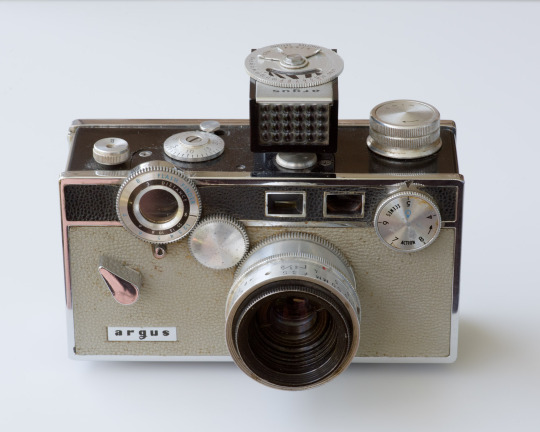
Vintage Camera Review
The Argus C3 Match-Matic
from 1958–1966
I was at a local thrift store and I saw an Argus camera in the showcase, I asked to see it. It had a tag saying it had been put out just the day before and was marked for $7.50. It's a pretty cool looking camera! Argus was a local to Ann Arbor camera company so its pretty well known in the area. There is even an Argus museum near downtown that's worth a visit.
It's a hefty camera, it's shaped like a small brick and weighs almost as much. It's a range-finder, completely mechanical except for the detachable light meter that doesn't even use a battery. The light meter is probably the most impressive aspect of the camera, with no battery, it has a solar cell that generates electricity. That electricity is measured to tell you how much light is in the scene and how to set the exposure. Its pretty common for cameras of this era but interesting none-the-less.
The camera it's self it pretty typical to start; a 50mm ƒ3.5 lens, it has a shutter dial, a frame counter, film winder and re-winder knobs, instant/bulb switch, cold shoe, and a very old style flash connector.
But then I notice the apertures and shutter speeds are not labeled as usual. The apertures count 3½, 4, 5, 6, 7, 8. I looked this up and they are equal to ƒ3.5, 4, 5.6, 8, 11, 16. The shutters are labeled 4, 5, 6, 7, 8 which are equal to ⅟10, ⅟30, ⅟60, ⅟125, ⅟300th. Ok, weird, I know scales weren't standardized for a while but I was surprised that a camera of this era wasn't, but I can get past that. Also, the shutter dial indicates that it should only be turned in one direction. If you turned it the other way, it may not change the exposure. I haven't tested enough to know for sure.
It also has an Argus iconic Flash Finder / Distance dial connected with an external gear. It gives a (yet again) proprietary flash guide number to help you set your Argus flash. According to the manual, this only works when using ISO 10 film and a specific type of flash bulb. You'll have to reference the manual for the math for different films and if you have a regular flash, you'll have to reference the manual to convert flash finder numbers to standard flash guide numbers. (I hate flash anyway, but if I didn't, I'm glad we have TTL flash or at least automatic flash for the last several decades)
So I loaded a roll of Tri-X 400 into the camera... but nope, I had to look that up too. I've used quite a few old cameras and I wasn't absolutely sure I could figure out how. Once loaded, strange, but not that hard, I started to take some pictures. Focusing is a pain it the butt! It uses a two lens focusing system where it shows you two images similar to the split focus system in an SLR. This isn't so bad except it's in a separate viewfinder than your main viewfinder. So if you are focusing on a moving subject, you can't focus while keeping an eye on your framing. Maybe my almost two-year old wasn't a good test subject for this camera (haha).
Like any mechanical camera, you have to cock the shutter. The lever is in a very inconvenient location. Its right where you want to hold this (did I mention) very uncomfortable camera. Ok, there is a lever in the way, thats not the problem. If you take a picture with your finger in the way of the lever, it'll stop the shutter from moving, giving you a much longer exposure than the dial is set to! It even says this in the original manual, its not just because its old and needs lubrication.
Film winding is weird, to be honest, I'm not 100% sure I loaded the film correctly. I have checked, it is winding the film but the counter doesn't count right. (I'll update this post with more info on that later) Also, when winding to the next frame, it doesn't stop it's self, you have to look at this little button next to the counter and when it moves, you've reached the next frame. Its very easy to under or over wind unless you are paying very close attention.
Resources with more info: http://www.cameramanuals.org/argus/argus_match-matic.pdf https://collectiblend.com/Cameras/Argus/Argus-C3-Matchmatic.html
Summery:
Its a cool looking, "entry level" camera for its time. It's much more difficult to use than other cameras of it's era. It's heavy and very awkward to hold. The light meter it pretty cool. I won't use this camera again. Its a display camera only.
Here are a few pictures of the camera, light meter, and viewfinder. Maybe later I'll add a photo of the inside (there is still film in it now).



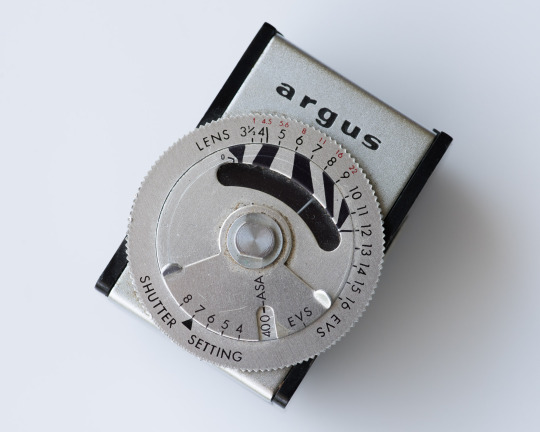
In the closeup of the light meter you can see it is set to ISO 400. The outer ring rotates to let you choose a combination of aperture and shutter. If you follow the line, the needle is pointing to the 7 which is ƒ11 while the shutter is 7 which is ⅟125. The last two are looking through the viewfinder and through the focus finder. A double image as seen would be out of focus.
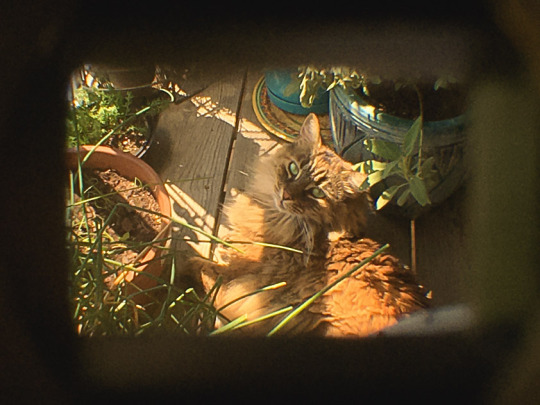
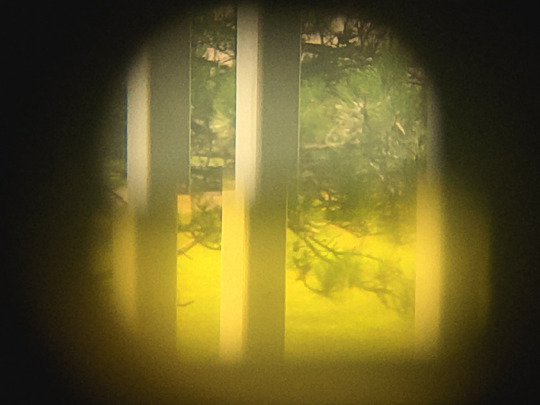
BTW was this interesting? Would anyone like to see reviews of other cameras I've used? Petri FT, Nikon F100 (my usual 35mm), Minolta SRT 101, Minolta XD5 (my secondary 35mm), 4x5 view camera, Sony HVC-2400 video tube camera, Kodak ADVANTiX F350 (my first camera as a kid), Polaroid Automatic 250 Land Camera?
#vintage camera#1950s camera#Argus#ann arbor#camera review#1950s#1960s#camera#Argus C3 Match-matic#Argus camera#ann arbor michigan#michigan#C3#Match-matic#1960s camera#vintage camera review#tech#photography#maisy#cats of tumblr
3 notes
·
View notes
Text

Journal and archive about my confession: April fools prank goes wrong. Part 8. Artwork made by Isananika (Howl out)
Things that made me happy during months of hell ever since: Kirby, Howl out, manga, bloodywood song, animated movies and films, Indie webseries animations, Glitch studio with their series Murder drones, metarunner and digital circus, avatar the last air bender, ninoma, wreck it ralph, in making of artworks and many more. Artist like Foxnroll, isananika, Sentinel winder, howlnteeth, artbyzhivago, mattyburito, creepincrawl, forestfright, aporicware, sorbet jungle, mikoyote, gib thorn, yorozu maru, kosseart, creep cat toy co and many more,
1 note
·
View note
Text
Camera Showcase
Olympus OM2 Spot Program
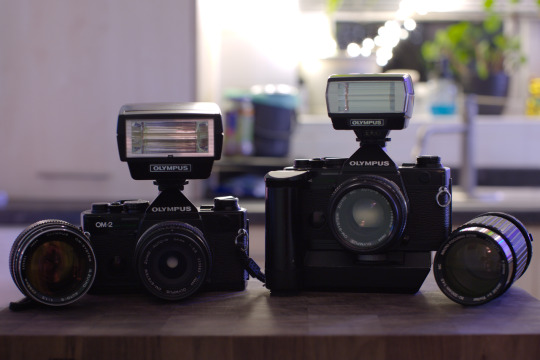
Pictured: Olympus OM2 Spot Programs with all owned OM specific lenses, flash units and motor winder
In the OM series of cameras, double digits such as the OM10 were consumer grade, whereas single digits were professional grade. First manufactured in 1984, the OM2 Spot Program (OM2S in the US) was a thorough overhaul of the OM2 to make it more competitive, meaning it's internals have more in common with the OM4 than it's predecessor.
Personally speaking, this is the most feature-rich, reliable 35mm film camera I have owned, making it my go-to workhorse for 35mm work. It’s compact design was very well-thought out and lightweight compared to other cameras before it.
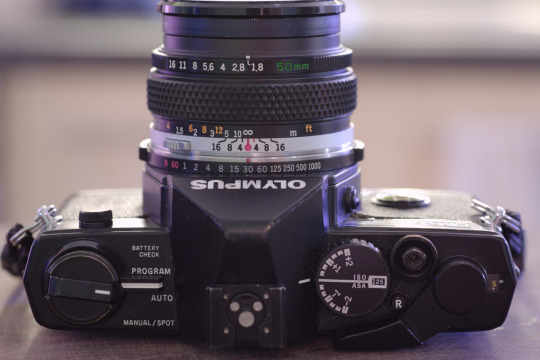
Pictured: Top view of the OM2 Spot Program highlighting camera controls
One of the really well-thought out designs of this camera is how the shutter speed, aperture and depth of field preview controls are all in the same area on or next to the lens, meaning with one hand you can set all the main exposure controls without looking away from the viewfinder. Instead of a shutter speed selector on top, it’s a combined ISO speed/exposure compensation dial.
The OM2 Spot Program has 3 shooting modes: Program, Auto and Manual/Spot. In Program, the lens is set to the highest/tightest aperture and the camera will set both the aperture and shutter speed according to the light levels. In Auto, the camera shoots in an aperture priority mode where the user sets the aperture and the camera deals with the rest. In both Program and Auto modes, the camera meters centre weighted but in the full manual mode the camera switches to spot metering. This is an extremely useful feature when shooting high contrast images and with light sources behind the subject matter.
Another great thing versus it's predecessors is that it has a mechanical 1/60th shutter speed option, meaning if the batteries are depleted mid-shoot there's still a way to take photos depending on light levels.
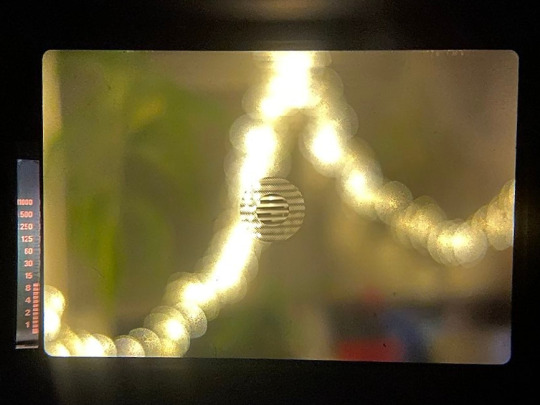
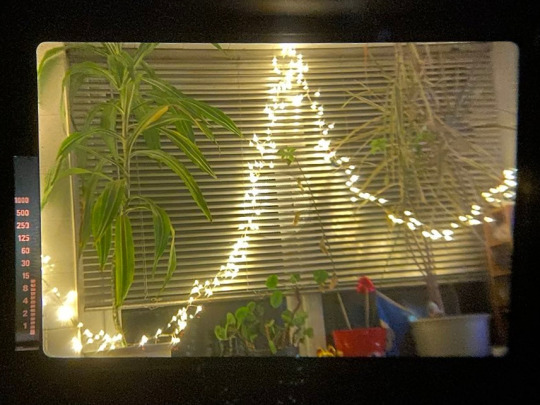
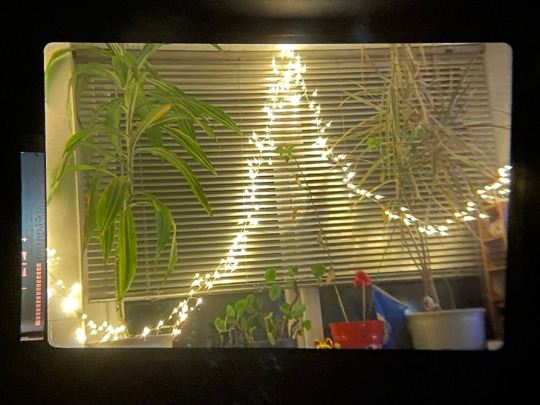
Pictured: 3 shots through the viewfinder showing the current focus screen's split centre and microprism centre, the Program/Auto mode metering and the Spot/Manual's digital match needle meter
The viewfinder's light meter is a LCD style display which can be illuminated for 90 seconds for better viewing in low light scenes. In Manual/Spot mode it switches from a bar depicting the shutter speed to a match needle style display. The viewfinder itself (dependant on chosen focus screen) is very clear and bright making composition a lot easier.
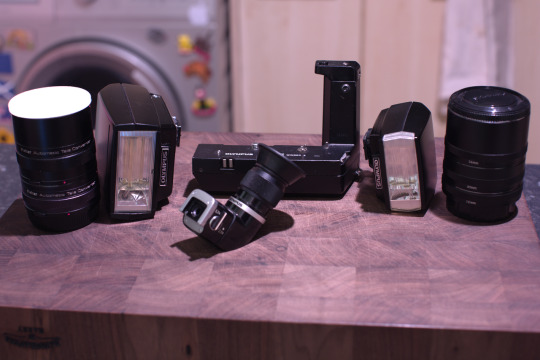
Pictured: A selection of various attachments for the OM series of cameras. teleconverters, extension tubes, right-angle viewfinder, motor winder and flash units
The OM series of cameras have a wide range of accessories to further extend the capabilities of this camera. The motor winder allows for shooting up to 3.5 frames a second in continuous mode. The right angle viewfinder is especially useful when shooting at awkward angles or with telephoto lenses on a tripod, and has a toggle switch to add a 2.5x magnification to it for really dialling in the focus. I have a T20 and T32 flash for my cameras, and although the more lightweight and smaller T20 is more portable and uses half the amount of batteries, I prefer the T32 as it allows for bounce flash photography. Both flash units have 3 modes: TTL camera auto, flash unit auto and full manual. I have only really used the TTL camera auto mode but with the lens set to f4 I haven't had any photos with blown out highlights or muddy shadows.
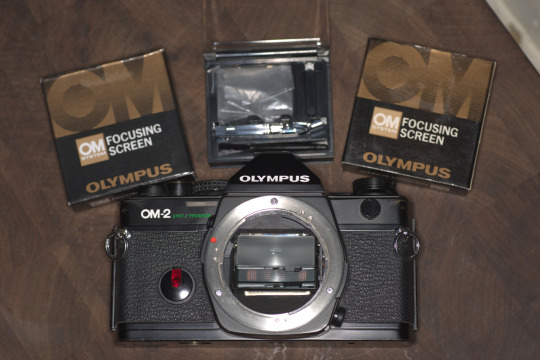
Pictured: three different focus screens and an OM2 Spot Program with no lens and the current focus screen unclipped from the camera
A great thing about the OM2 Spot Program and other single digit OM cameras is the ability to fairly easily switch focus screens. Different lenses and scenarios work better with different screens and the ability to change really increases the versatility of the camera. For example, for general use I tend to use a split centre with microprism focus screen to give me 3 ways to focus, but with a telephoto (especially with teleconverters) the split centre goes black due to the low light levels. At that point, I have the option to switch to a microprism only or ground glass screen to make it easier to focus.
All in all, a fantastic camera with a solid design, accurate light meter and a wide selection of lenses and attachments which if in good condition will be a fantastic addition to any vintage camera collection.
#photography#film photography#ishootfilm#analog photography#filmisnotdead#vintage cameras#camera review#35mm film#35mm format#reviews#retro camera#olympus camera#olympus om2sp#olympuscamera#35mm camera#analog camera#old camera#camera#om2sp
3 notes
·
View notes
Text

Hey guys please go check Thunderbirds 2004 crossover with top gun maverick fan film on youtube aka Bernadette winder fan films and this is my thumbnail for it!!
2 notes
·
View notes
Text
BOOKS OF 2023
I'm so late posting this but I'm determined to get it done. These are some of the books I read/enjoyed in 2023. I still have a massive to-read pile so not all these books actually came out in 2023 (tho' most of them did)
I don’t tend to read that many novels/fiction – I think the only one I read this year was Queen K. by Sarah Thomas about a tutor to a rich oligarch’s family. Also got the books of the scripts for Succession Seasons 3 & 4.
I tend to read a lot of memoirs. This year I read ones by Paris Hilton (which was surprisingly good), Hadley Freeman (which also talks about anorexia in general), Michelle Tea (which talked about her experiences of pregnancy in the context of being a queer woman), Ava Cherry and the latest one by Boy George.
Also Anita Bhagwandas’ book Ugly which looks at various beauty standards and how they affect us all + I really liked it. Plus Grace Dent did a book based on her podcast called Comfort Eating which looks at the favourite comfort foods of various celebrities (including recipes) combined with a bit of her own memoir.
I got a new book on Marilyn Monroe by Richard Barrios which examines her acting roles and re-evaluates her as an actor.
Read Claire Dederer’s book, Monsters, which looks at how we respond to problematic artists/creators. It raised some really interesting questions and personally I don’t think there are any easy answers. Another interesting book I came across was Creative Not Famous: The Small Potato Manifesto by Ayun Halliday which I thought offered some really good advice.
I’m keen on history especially books that look at cultural/social history. I found this fascinating book called Queer Blues which looks at the early blues musicians who explored sexuality/gender. Also another book I really recommend is I Thought I Heard You Speak: Women at Factory Records by Audrey Golden – one thing I really liked about it was the range of women they spoke to, so not just musicians but the security staff and DJs from the Hacienda. Read We Peaked At Paper which was about the UK fanzine scene.
In terms of more general history I got David Mitchell’s book, Unruly, which is his personal take on the history of the British monarchy up to Elizabeth I with plenty of sarcasm and general observations of the concept of monarchy.
I love the format of oral histories in books. This year I read Reach For the Stars (about the pop stars of the late 90s/early 00s), Faster Than a Cannonball (looking at various aspects of the nineties), and Don’t F&&K It Up (about the first ten years of RuPaul’s Drag Race).
I also read a lot of books on music. This year I read two of the new releases on goth music/culture – The Art of Darkness by John Robb and Season of the Witch by Cathi Unsworth (which I preferred especially the book/film recommendations and the gothmothers/gothfathers sections).
Read Parachute Women by Elizabeth Winder which re-evaluates the legacy of some of the women linked with the Rolling Stones – (Anita Pallenberg, Marianne Faithfull, Bianca Jagger and Marsha Hunt). I felt like it concentrated more on Anita & Marianne and it would have been nice to expand the book to cover the likes of Jo Wood, Jerry Hall and Mandy Smith but overall I loved the book.
It also ties in with one of my other areas of interest, feminism. I read Toxic by Sarah Ditum which looks at how various female celebrities were treated by the popular media in the late 90s/early 00s such as Britney Spears and Amy Winehouse.
#end of year#book reviews#my reviews#marilyn monroe#succession#rupaul's drag race#john robb#cathi unsworth#anita pallenberg#marianne faithfull#bianca jagger#marsha hunt#ava cherry#boy george#paris hilton#grace dent#michelle tea
2 notes
·
View notes